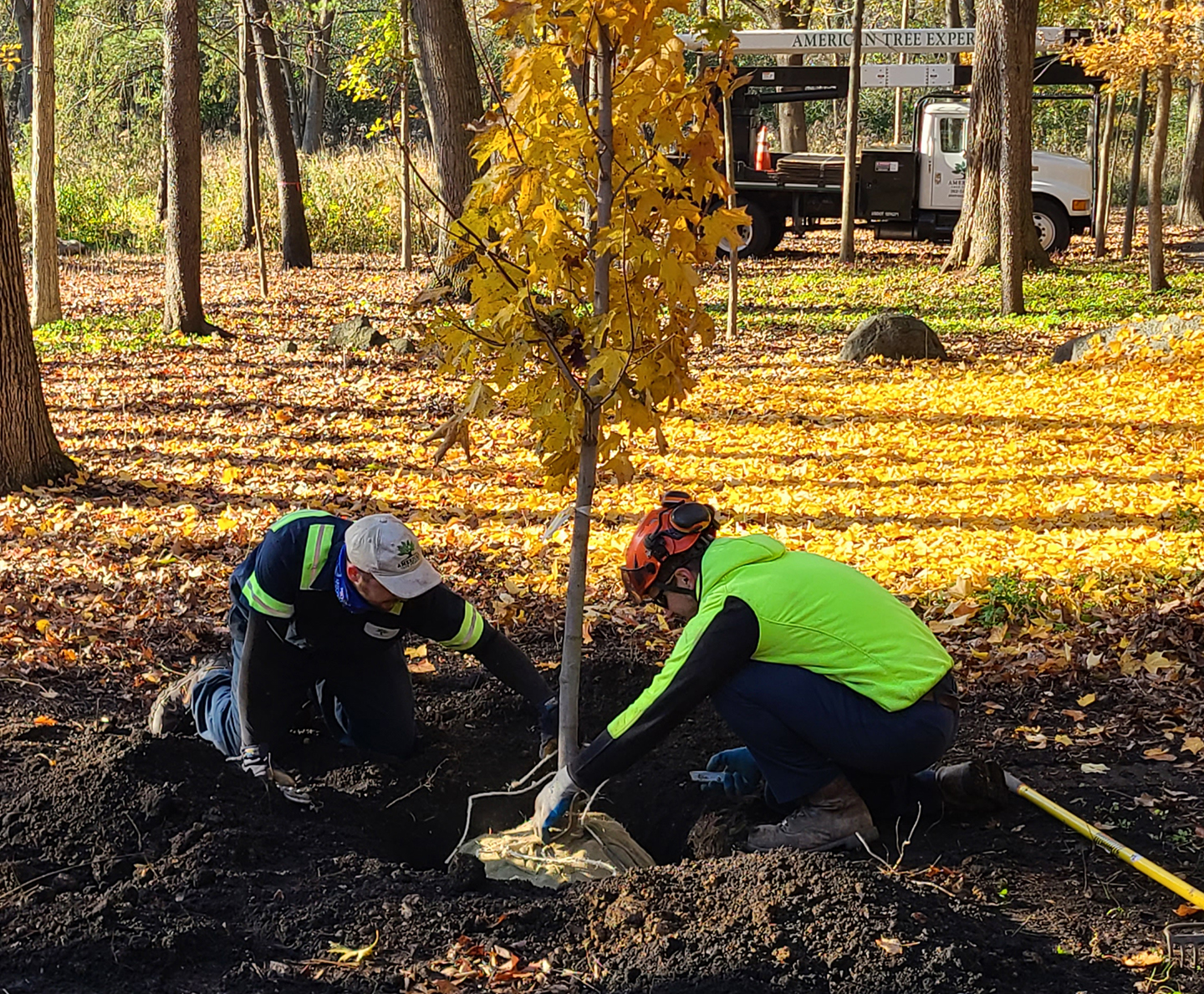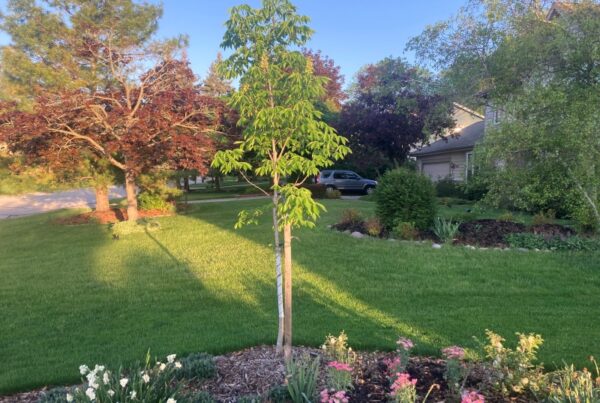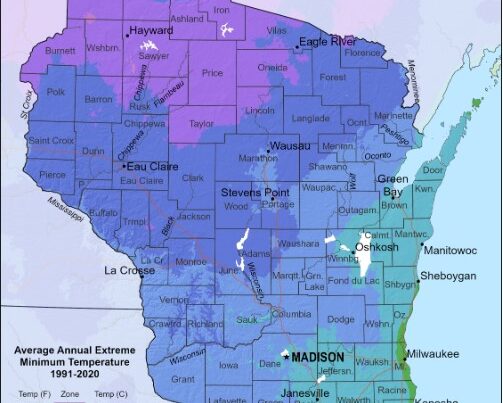Did you know that maple and ash trees make up more than 40% of Wisconsin’s urban forest? Emerald ash borer (EAB) wiped out thousands of ash trees in recent years, so residential and commercial property owners may be looking for suitable replacements. Perhaps you want a tree with more color, shade, or unique characteristics. We have options for you.
Our certified arborists compiled a list of the 10 best trees to consider in southeast Wisconsin and can help find a place for them in your landscape.
- Ginkgo
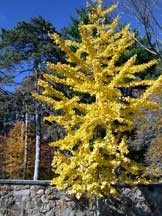 Ginkgo biloba
Ginkgo biloba
Height: 50-60 Feet
Form: Pyramidal
Growth Rate: Slow
Life Expectancy: Long
Flower Color: Green
Sun Exposure: Full sun
Soil: Sandy loam through clay
Fall Color: Yellow
Hardiness Zones: 3-8
Gingko is an ancient tree with the earliest leaf fossils dating back 270 million years. It is well suited for the urban environment because it is resistant to insect and disease problems and can tolerate drought, heat and poor soil conditions.
This tree needs a lot of space, as it grows to be a large, picturesque tree that can live many years. The leaves have a very interesting shape, which flutter in the wind and turn a brilliant yellow in the fall.
- European Beech
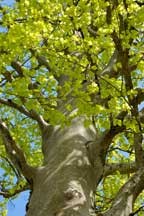 Fagus Sylvatica
Fagus Sylvatica
Height: 50-75 Feet
Spread: 40-60 Feet
Form: Pyramidal to oval
Growth Rate: Slow to moderate
Flower Color: Greenish-yellow
Sun Exposure: Full sun – partial shade
Soil: Moist, well drained
Fall Color: Yellow to russet-brown
The European beech is a highly prized and very attractive tree grown in large areas such as parks, lawns, and golf courses. Its attractive form, branch pattern, edible nuts, and smooth bark make it an excellent specimen tree. There are many different cultivars including purple-leaved and bronze-leaved beeches.
This tree is intolerant to drought, poorly drained soils, soil compaction, and road salt. Transplanting is difficult and should be done in the spring.
- Common Hackberry
 Celtis occidentalis
Celtis occidentalis
Height: 50-75 Feet
Spread: 35-50 Feet
Form: Upright
Growth Rate: Fast
Life Expectancy: Long
Sun Exposure: Full sun/part shade
Soil: Moist, well drained
This excellent shade tree is very tolerant of urban conditions. It is a fast grower that attracts an array of wildlife with its fruit. Hackberry is a cold-hardy tree; however, it is sensitive to road salt. The bark has a corky appearance that is very ornamental. There are few diseases that affect the Hackberry and the ones that do are mainly cosmetic.
- Ohio Buckeye
 Aesculus glabra
Aesculus glabra
Height: 40-60 Feet
Spread: 30-35 Feet
Form: Rounded
Growth Rate: Slow-Medium
Sun Exposure: Full sun/part shade
Soil: Moist, well drained
Hardiness Zones: 4-7
The Ohio Buckeye is a medium sized tree with a coarsely textured appearance. In spring, this tree produces prominent upright yellow-green flowers that are easily recognized. The flowers develop into a large brown, showy fruit that ripens in late summer. It produces large leaves composed of five leaflets that spread out like a fan. Although it is not native to Wisconsin, the tree is grown successfully in our area as a specimen shade tree on large open areas. One drawback of this tree is its susceptibility to leaf blotch and leaf scorch, especially during hot dry summers.
- Kentucky Coffeetree
 Gymnocladus dioicus
Gymnocladus dioicus
Height: 60-80 Feet
Spread: 40-50 Feet
Form: Oval, round
Growth Rate: Slow-Moderate
Sun Exposure: Full sun
Soil: Widely adaptable
Zone: 3-8
The Kentucky Coffeetree is picturesque in summer and presents a bold statement during winter, with the development of very coarse textured branches. A member of the legume family, Coffeetree seeds were used by early North American colonists as a coffee substitute. A lack of significant insect and disease problems and a high tolerance for urban conditions makes this tree an excellent choice for the landscape. The Coffeetree should be planted in wide-open spaces that can accommodate the large size and beauty of this tree at maturity.
- Linden
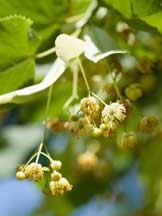 Tillia
Tillia
Height: 50 Feet
Spread: 20-30 Feet
Form: Pyramidal
Growth Rate: Medium
Sun Exposure: Full sun, partial shade
Soil: Widely adaptable
Zone: 3-7
There are many cultivars of linden, all with dense foliage making for an excellent shade tree. The linden has a pyramidal to oval shape with defined edges giving it a clean look. It is adaptable to a wide variety of soils making it an excellent choice for urban environments. The linden has a strong central leader, however, pruning at regular intervals is necessary to maintain one dominant leader.
- Musclewood
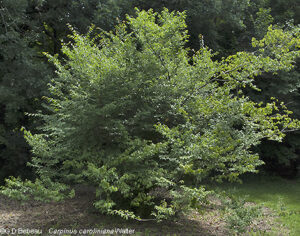
Carpinus caroliniana
Height: 30 Feet
Spread: 25 Feet
Form: Rounded
Growth Rate: Slow
Sun Exposure: Full sun to full shade
Soil: Widely adaptable
Zone: 3-9
An underutilized tree, the musclewood is most highly noted for its unusual bark that has a very interesting muscular appearance. Often grown with a multi-stemmed trunk, this tree works great in naturalized or woodland settings. Fall color is often spectacular and can be bright yellow, orange or red.
- Swamp White Oak
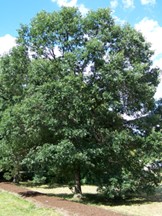 Quercus bicolor
Quercus bicolor
Height: 60 Feet
Spread: 60 Feet
Form: Upright, spreading
Growth Rate: Slow-medium
Sun Exposure: Full sun to partial shade
Soil: Acidic
Zone: 4-8
The swamp white oak is a beautiful large shade tree, best suited for larger landscapes with ample room to grow. It is one of the easiest oaks to transplant, but does require acidic soil. The leaves are interesting with a medium green color and a whitish color on the undersides. Once established, it is quite tolerant of urban conditions, however, it is not very drought tolerant.
- Concolor Fir
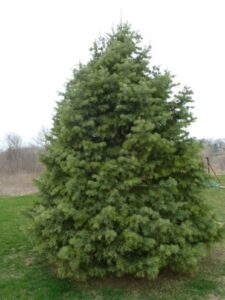 Abies concolor
Abies concolor
Height: 50 Feet
Spread: 20 Feet
Form: Conical
Growth Rate: Slow to medium
Sun Exposure: Full sun to partial shade
Soil: Well drained soil
Zone: 4-7
A fantastic substitute for the problematic Colorado blue spruce is the concolor or white fir. This evergreen is the best fir to plant for our area. It has soft blue-green foliage that adds nice color to the landscape.
- Serviceberry
 Amelanchier
Amelanchier
Height: 6-20 Feet
Form: Suckering shrub/small tree
Growth Rate: Moderate
Flower Color: White
Sun Exposure: Full-partial sun
Soil: Prefers moist, well-drained soil
Fall Color: Yellow to Orange
This small deciduous tree or shrub is native to Wisconsin and provides year-round interest. It produces white showy flowers in early spring which turn into small purple fruits that are edible and attract wildlife. Fall is spectacular and the attractive bark is visible in the winter.
Contact us and we’ll help you choose the best tree for your landscape.

